The Making of the Feathered Headdress Portrait
Explore the creative process behind James's iconic feathered headdress self-portrait — from digital reference to final oil on canvas.
1. AI Reference Inspiration
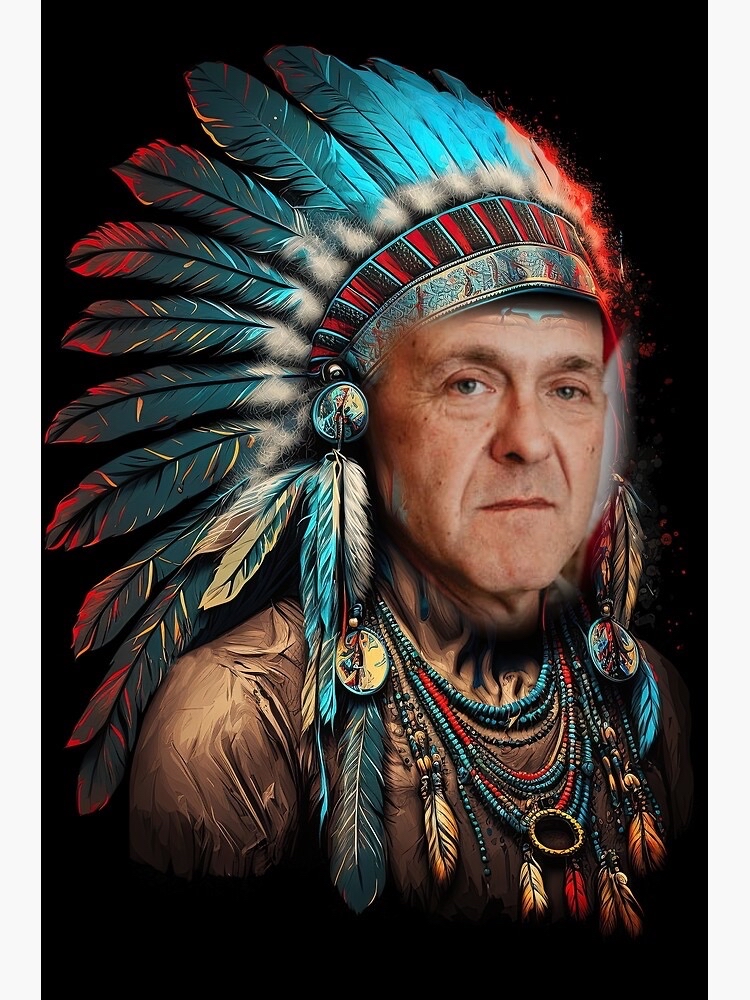
This AI-generated image served as the conceptual starting point for the portrait.
2. Sketch Grid Layout
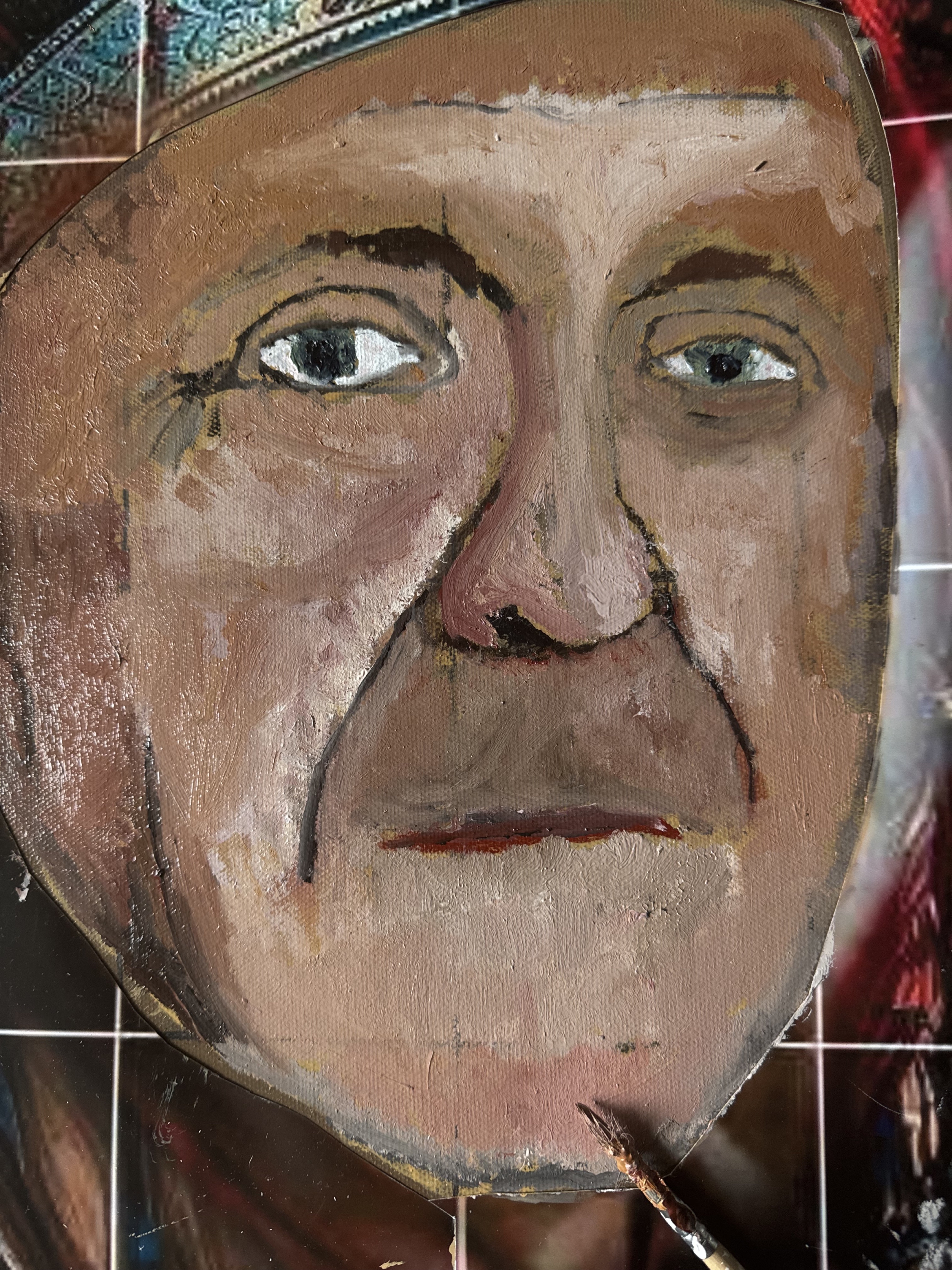
Transferring proportions to canvas using a traditional grid method for accuracy.
3. Underpainting
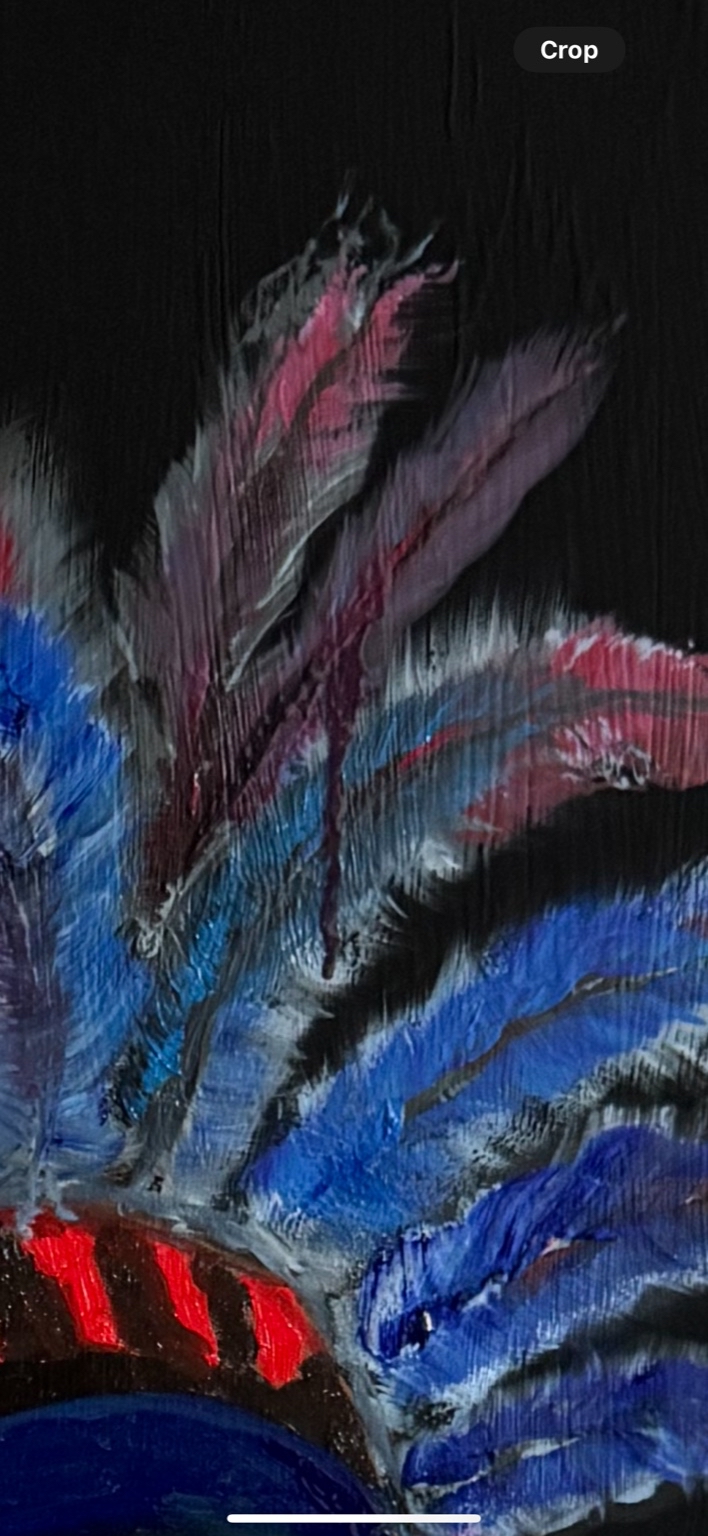
The final phase began with the background. I wanted it to be the darkest black possible. I ordered Black 4.0 from Culture Hustle, only to be scammed and sent Black 3.0 with a mislabeled bottle — an experience that felt like art mimicking my own life.
Still, Black 3.0 absorbed 99% of light and made the painted face stand out as if floating in shadow. I built the headdress band with bold red and electric blue to contrast the void — but again, like myself, it needed to be darker.
I used Geneva oils for the rest, from DrawMixPaint. Their pigment is rich, expressive, and stays wet for days — perfect for the layering and texture I needed.
4. Color Work and Layering

Exploration of skin tones to bring realism and emotion into the portrait. Even the moles on my face are in the correct spots.
5. Finalizing Details
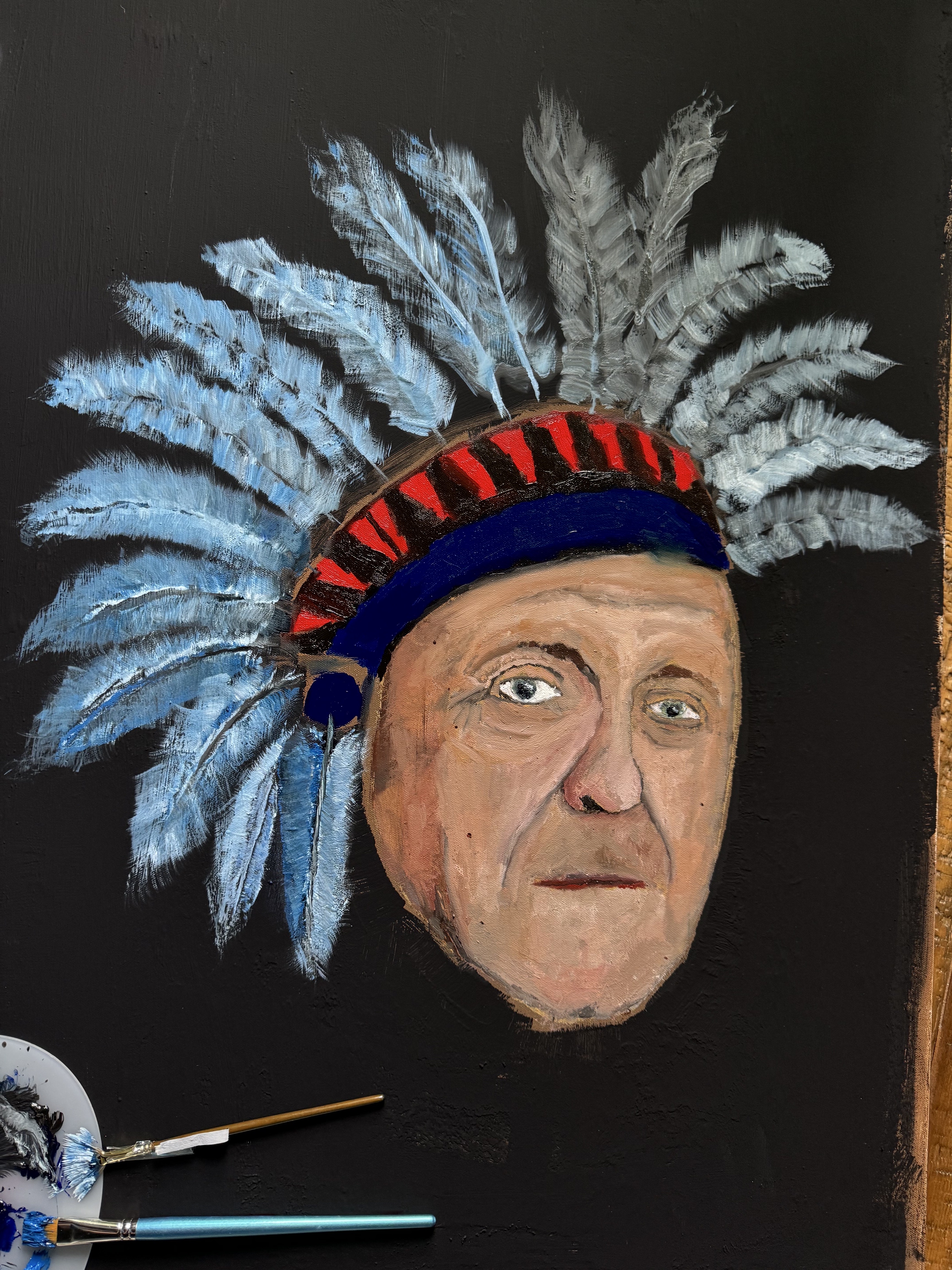
For the feathers, I wanted vibrancy — not natural, but supernatural.
As a Native American, feathers carry deep cultural meaning. These represent not just tradition, but spirit, energy, even the spectral.
I was inspired by ‘80s color palettes — glowing reds, electric blues — unnatural in the wild but symbolic of my connection to the spirit world, something passed down through my blood.
My grandfather used to say, “I’ll check the feathers.” These are for him.
6. Finished Piece
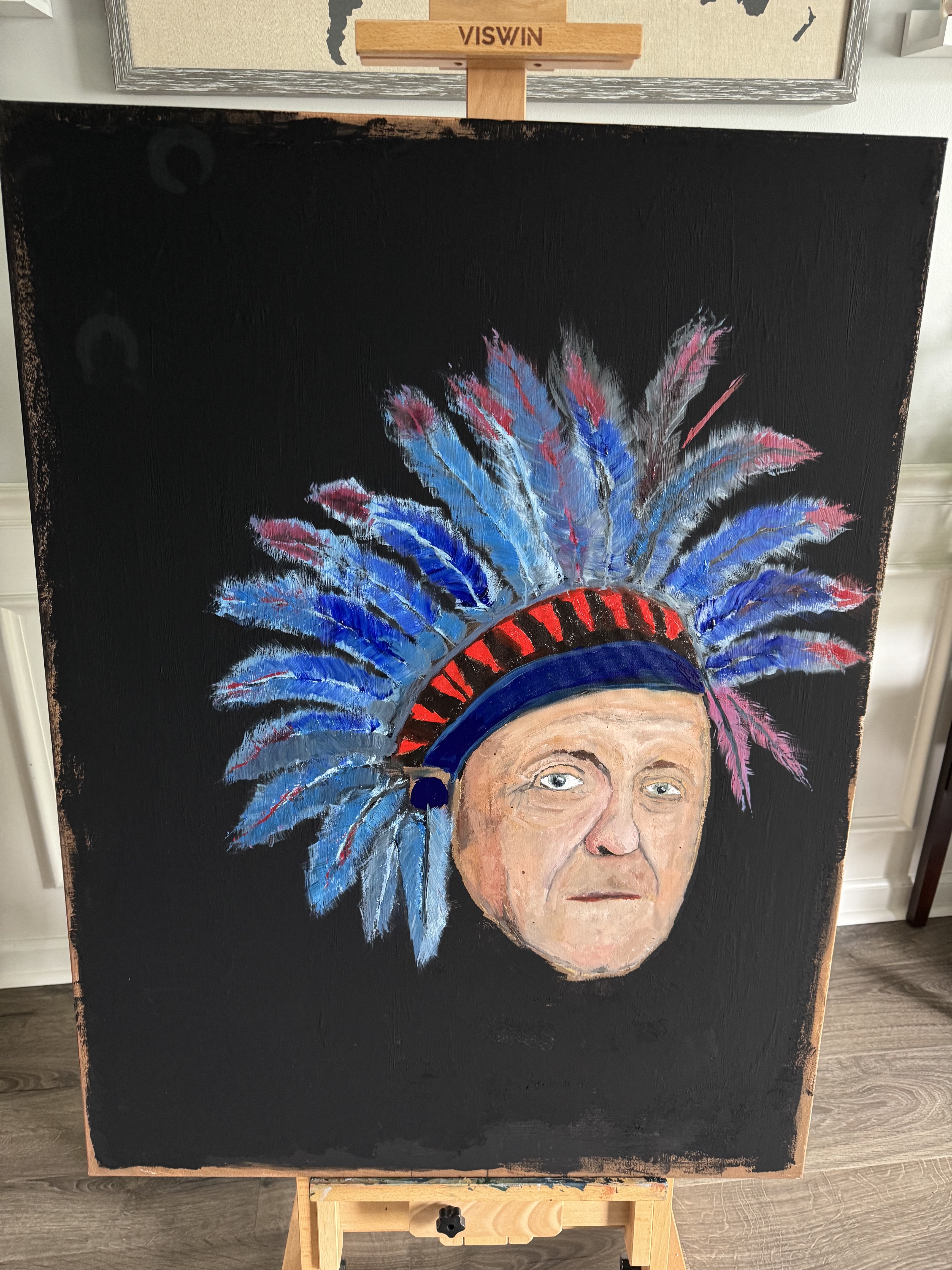
"The Eyes Were the Last to Speak"
Last came the eyes. I wanted them to communicate one thing:
“I didn’t come to help you. I came to watch you die.”
I used a razor-fine brush, splitting the bristles to isolate a single hair, then added a thread of red to the whites. The pupils were layered with uneven strokes of blue and brown, meant to unsettle.
7. Sunset Display
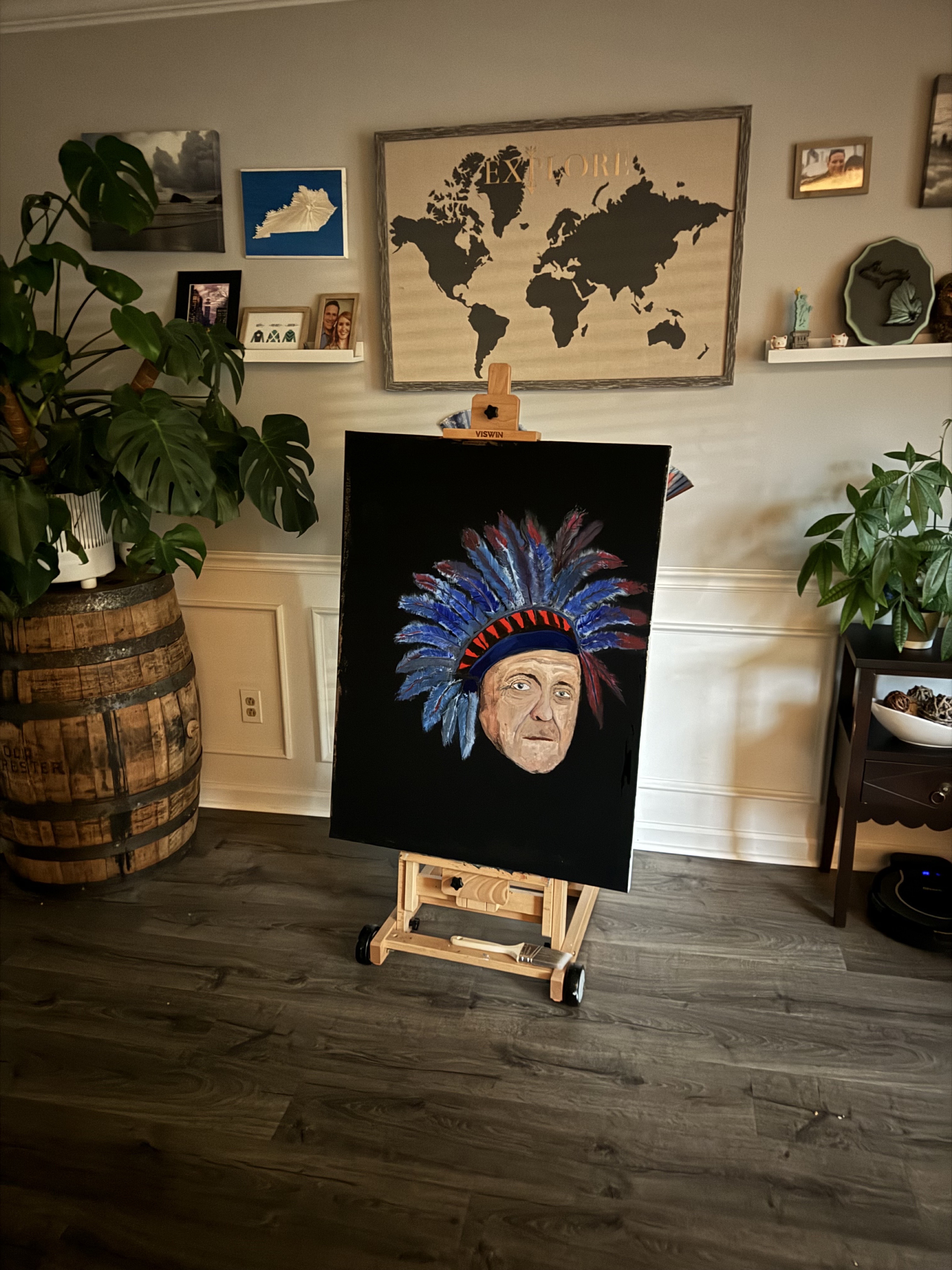
Displayed at sunset. The disproportioned gaze forces the viewer to linger — until they find themselves staring deep into the bloodshot void as the sun sets.
The eyes are dark as the Kentucky River. And just as cold.